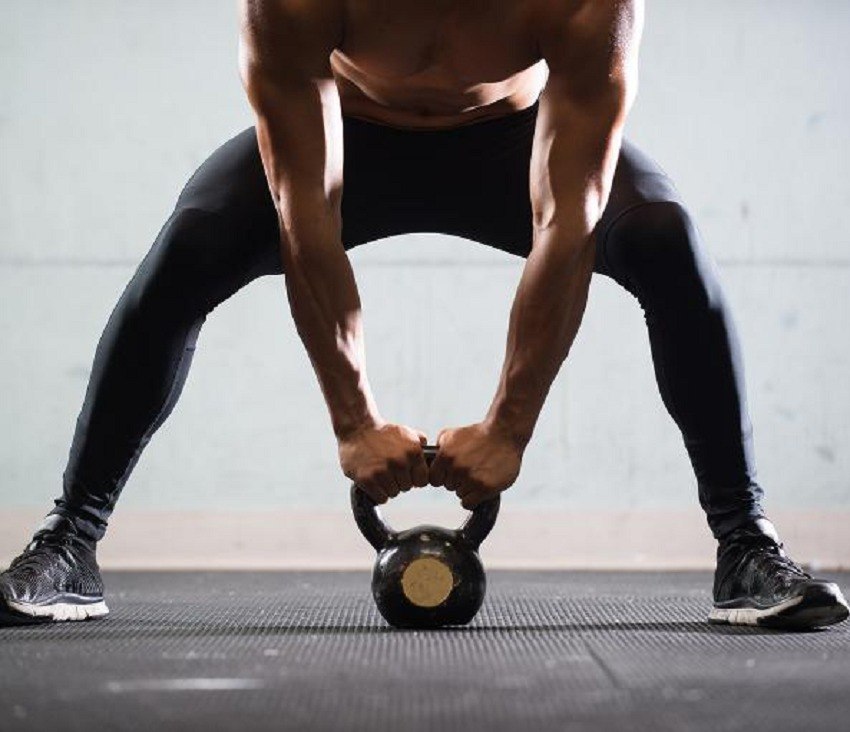8 Ways to Exercise Around Common Injuries
 Health & Fitness
Health & Fitness
No matter what sport you play or how much you work out in the gym, bruises, sprains, strains, and other incidents are commonplace in an active lifestyle.
And although injury often results in decreased range of motion among other physical limitations, you can still perform certain corrective and strengthening exercises to rehabilitate your muscles.
If you have lingering aches and pains or simply can't do compound barbell movements, swap in these eight exercises to build strength and return to full function in no time.
EXERCISE THAT GIVES YOU PAIN: SQUAT OR LUNGE
WHY IT HURTS
Aside from a previous injury, knee pain can be caused by improper squat form. If you’re not injured but squatting hurts your knees, keep your weight on your heels, torso upright, and maintain your posture. Your feet should be hip-width apart and pointed slightly outward. As you descend, push your butt back as if you were going to sit back on a chair and aim to squat below parallel. If you’re experiencing knee pain from an injury and squats are out of the equation, try these four lower body moves.
4 EXERCISE SWAPS FOR SQUATS
1. Kettlebell Swing
Because this is a hinge and not a squat, you will save your knees while working the rest of your body to exhaustion. When swinging a kettlebell, remember to keep a flat back and brace your abs. The swing targets all muscles in the posterior chain, glutes, adductors, hamstrings and core.
2. Stability Ball Lying Leg Curl
Lie on floor with heels on top of a stability ball and legs extended. Raise your hips off the ground, trying to keep your hips raised up during the entire exercise. Flex knees and pull the ball as close to your glutes as possible. Hold the ball here for 2-3 seconds. As you get stronger, you can progress to a one leg lying leg curl. This will strengthen your hamstrings, while avoiding impact on your knees.
3. Romanian Deadlift
Hold a bar about shoulder width grip at your hips. Flex knees slightly and bend at the hips to push butt out and lower your torso. Reverse the motion to assume starting position. Your back should stay flat as the bar descends down your legs. Keep bar as close to body as possible throughout the movement.
4. Mini Band Abduction or Sidestep
Weak hips can manifest as knee pain. The mini band abduction exercise will increase hip strength and stability, which will help alleviate the knee pain. Place the band below your knees with your body standing in an athletic stance, knees slightly bent, chest up, and take a big side step with your right foot. Move your left foot towards our right foot but never bring them together; you want to always maintaining tension on the mini band. Perform three sets of 10 yards in each direction.
EXERCISE YOU CAN’T DO: OVERHEAD PRESS
WHY IT HURTS
The shoulder joint is very mobile and allows for movement in multiple planes of motion. This mobility also makes it more susceptible to injuries such as impingement or rotator cuff tears. Muscle imbalances between the external/internal rotators and upper/lower trapezius, poor posture, improper exercise form and overuse can lead to impingement, which is a ”pinching” of shoulder muscles that can cause pain.
If you already have a shoulder injury, avoid pressing overhead and focus on strengthening the rotator cuffs and scapula. Swap in these four shoulder strengthening moves to avoid future pain.
4 EXERCISE SWAPS FOR THE OVERHEAD PRESS
1. Rear Deltoid Raise
Lean on your side against a stability ball with your legs extended out and hold a dumbbell in one hand with an overhand grip. With arm extended straight out, raise your arm across your body until it passes the shoulder joint. Slowly lower the dumbbell back in a controlled manner. Use a light dumbbell. Keep reps at 10-12 per arm. If you don’t have a stability ball, lie down prone on a bench and perform this exercise with both arms simultaneously.
2. External Rotations
Lie on your left side on a bench or on the floor with a dumbbell in your right hand in an overhand grip. The dumbbell should be touching the bench or floor with your right forearm across your stomach. Lift the weight by rotating your shoulder outward while keeping your arm against the side of your body. Continue to lift your arm until it’s perpendicular to the floor. Keep reps at 10-12 per set and rest 60-90 seconds between sets. Repeat for 2-3 sets.
3. The Turkish Get Up
Lie on your back on the floor holding a kettlebell with your right hand over chest. Bend right knee and place foot on floor. Raise yourself off of the floor using your left hand as a post to come up to a standing position. Reverse the motion to return to the starting position. When you do the move with the bell in the left hand, bend the left knee. Add this movement to your shoulder routine, performing 3-5 reps on each arm.
4. Shoulder Scaption
This corrective exercise targets your stabilizers around your shoulder blades. Hold a pair of light dumbbells by your sides with your thumbs pointing up. Start the exercise by raising your arms out in front of you, about 30 degrees off the center, not directly in front of your chest. Continue until your arms are parallel to the ground and then return to the starting position. Perform 3-4 sets of 8-10 reps.
Source: mensfitness.com




